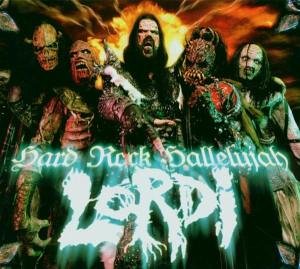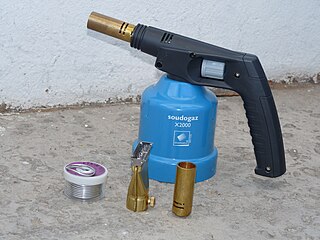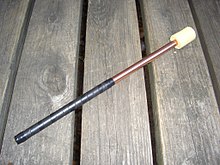Kerosene, or paraffin, is a combustible hydrocarbon liquid which is derived from petroleum. It is widely used as a fuel in aviation as well as households. Its name derives from κηρός (kērós) meaning "wax", and was registered as a trademark by Nova Scotia geologist and inventor Abraham Gesner in 1854 before evolving into a generic trademark. It is sometimes spelled kerosine in scientific and industrial usage.

Pyrotechnics is the science and craft of creating such things as fireworks, safety matches, oxygen candles, explosive bolts and other fasteners, parts of automotive airbags, as well as gas-pressure blasting in mining, quarrying, and demolition. This trade relies upon self-contained and self-sustained exothermic chemical reactions to make heat, light, gas, smoke and/or sound. The name comes from the Greek words pyr ("fire") and tekhnikos.

Mineral oil is any of various colorless, odorless, light mixtures of higher alkanes from a mineral source, particularly a distillate of petroleum, as distinct from usually edible vegetable oils.

A lighter is a portable device which uses mechanical or electrical means to create a controlled flame, and can be used to ignite a variety of flammable items, such as cigarettes, butane gas, fireworks, candles, or campfires. A lighter typically consists of a metal or plastic container filled with a flammable liquid, a compressed flammable gas, or in rarer cases a flammable solid ; a means of ignition to produce the flame; and some provision for extinguishing the flame or else controlling it to such a degree that the user may extinguish it with their breath. Alternatively, a lighter can be one which uses electricity to create an electric arc utilizing the created plasma as the source of ignition or a heating element can be used in a similar vein to heat the target to its ignition temperatures, as first formally utilized by Friedrich Wilhelm Schindler to light cigars and now more commonly seen incorporated into the automobile auxiliary power outlet to ignite the target material. Different lighter fuels have different characteristics which is the main influence behind the creation and purchasing of a variety of lighter types.

Circular breathing is a breathing technique used by players of some wind instruments to produce a continuous tone without interruption. It is accomplished by inhaling through the nose while simultaneously pushing air out through the mouth using air stored in the cheeks.

Fire eating is the act of putting a flaming object into the mouth and extinguishing it. A fire eater can be an entertainer, a street performer, part of a sideshow or a circus act but has also been part of spiritual tradition in India.

Fire performance is a group of performance arts or skills that involve the manipulation of fire. Fire performance typically involves equipment or other objects made with one or more wicks which are designed to sustain a large enough flame to create a visual effect.

Firefighting is a profession aimed at controlling and extinguishing fire. A person who engages in firefighting is known as a firefighter or fireman. Firefighters typically undergo a high degree of technical training. This involves structural firefighting and wildland firefighting. Specialized training includes aircraft firefighting, shipboard firefighting, aerial firefighting, maritime firefighting, and proximity firefighting.

The Aquabats are an American rock band formed in Huntington Beach, California, in 1994. Throughout many fluctuations in the group's line-up, singer the MC Bat Commander and bassist Crash McLarson have remained the band's two constant fixtures. As of 2024, the Aquabats' members include saxophonist Jimmy the Robot, drummer Ricky Fitness, guitarists Eaglebones Falconhawk and Chainsaw, the Prince of Karate, trumpeter Cat Boy and keyboardist Gorney.

Scuba diving is a mode of underwater diving whereby divers use breathing equipment that is completely independent of a surface breathing gas supply, and therefore has a limited but variable endurance. The name scuba is an acronym for "Self-Contained Underwater Breathing Apparatus" and was coined by Christian J. Lambertsen in a patent submitted in 1952. Scuba divers carry their own source of breathing gas, usually compressed air, affording them greater independence and movement than surface-supplied divers, and more time underwater than free divers. Although the use of compressed air is common, a gas blend with a higher oxygen content, known as enriched air or nitrox, has become popular due to the reduced nitrogen intake during long or repetitive dives. Also, breathing gas diluted with helium may be used to reduce the effects of nitrogen narcosis during deeper dives.

The term blowpipe refers to one of several tools used to direct streams of gases into any of several working media.

Supernova is an American punk rock band, founded in Costa Mesa, California in 1989. The band has released three full-length albums, numerous singles and EPs and were part of the original 1995 Vans Warped Tour line-up. They are perhaps best known by wider audiences for their song "Chewbacca", which was featured on the soundtrack to Kevin Smith's 1994 independent film Clerks. They are also known for the song "Up & Down", which was performed in 2007 on the Nick Jr. children's show Yo Gabba Gabba!

"Hard Rock Hallelujah" is a song by Finnish hard rock band Lordi. It represented Finland in the Eurovision Song Contest 2006, held in Athens, resulting in the country's only ever victory in the contest. It reached the No. 1 spot in Finland and reached the top 10 in eight other European countries. In the United Kingdom, the song peaked at No. 25.
Ryan Stock is a Canadian-based TV stunt man from Beaumont, Alberta who has a show on the Discovery Channel called "Guinea Pig". Stock and his fiancée Amber Lynn Walker travel around Canada and the United States and perform stunts involving electrical shocks, automobile crashes and intentional poisoning. The Guinea Pig Show is no longer in production but may still air in some countries.
Hooping is the manipulation of and artistic movement or dancing with a hoop. Hoops can be made of metal, wood, or plastic. Hooping combines technical moves and tricks with freestyle or technical dancing. Hooping can be practiced to or performed with music. In contrast to the classic toy hula hoop, modern hoopers use heavier and larger diameter hoops, and frequently rotate the hoop around parts of the body other than the waist, including the hips, chest, neck, shoulders, thighs, knees, arms, hands, thumbs, feet, and toes. The hoop can also be manipulated and rotated off the body as well. Modern hooping has been influenced by art forms such as rhythmic gymnastics, hip-hop, freestyle dance, fire performance, twirling, poi, and other dance and movement forms.

A naphtha launch, sometimes called a "vapor launch", was a small motor launch, powered by a naphtha engine. They were a particularly American design, brought into being by a local law that made it impractical to use a steam launch for private use.

Johnny Strange, nicknamed "the man with ears of steel", is an English world record breaking performance artist, producer, street performer and bestselling author based in London, England. He is known for performing daredevil stunts with a comedic twist.

A blowtorch, also referred to as a blowlamp, is an ambient air fuel-burning tool used for applying flame and heat to various applications, usually in metalworking.

Fire breather's pneumonia is a distinct type of exogenous—that is, originating outside the body—lipoid pneumonia that results from inhalation or aspiration of hydrocarbons of different types, such as lamp oil. Accidental inhalation of hydrocarbon fuels can occur during fire breathing, fire eating, or other fire performance, and may lead to pneumonitis.

"Fashion Zombies!" is a song by American band The Aquabats and the leading single from their fourth studio album Charge!!, released on Nitro Records in 2005.

























